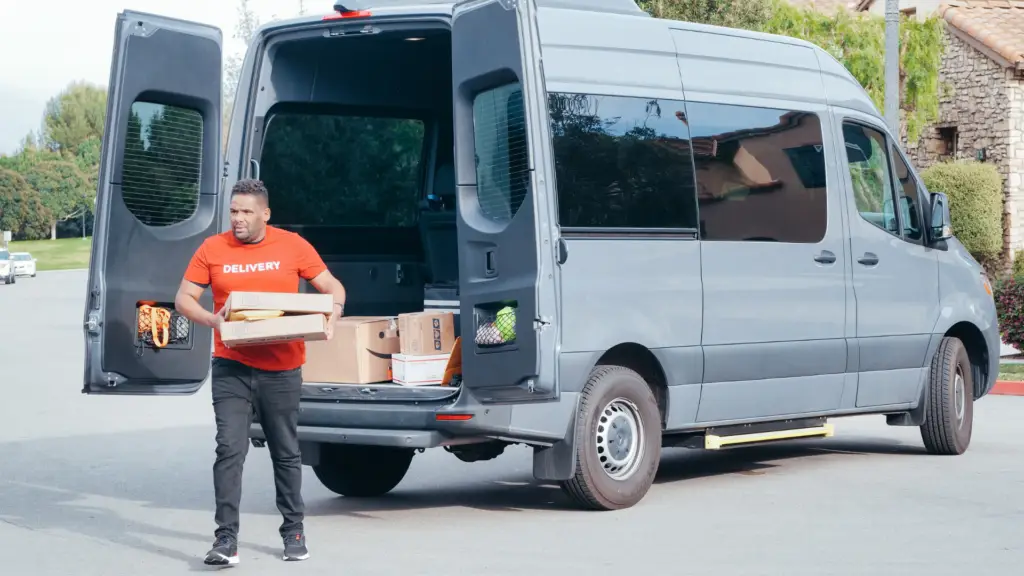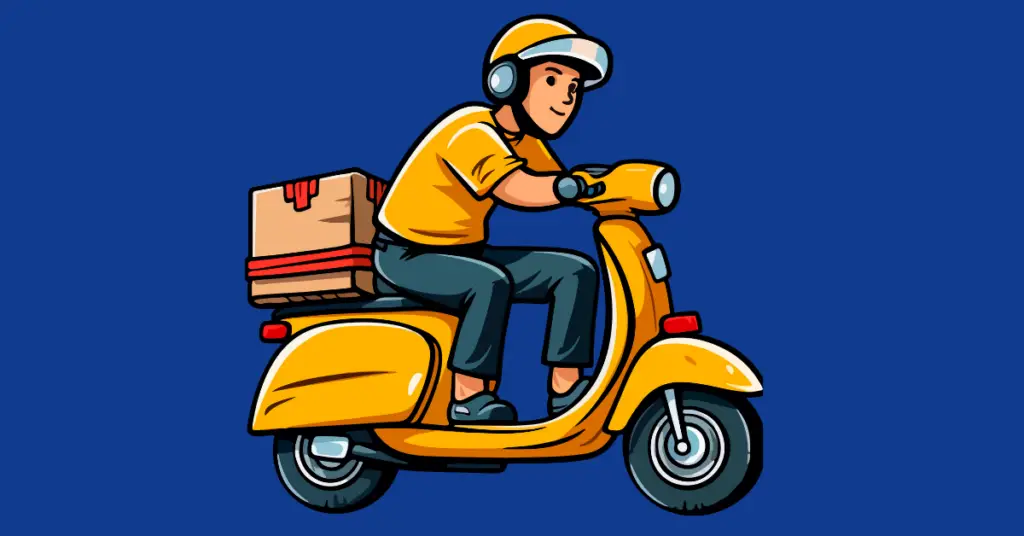Understanding shipping status updates can be challenging, especially when you encounter terms like “In Transit,” “Out for Delivery,” and “In Delivery.” Each term provides different information about your package’s location and status. In this blog, we’ll dive into the meaning of In Transit, explore its implications, and clarify how it differs from other statuses. We’ll be discussing:
- What Does In Transit Mean?
- What Does Out for Delivery Mean?
- Differences Between “In Transit” and “Out for Delivery”
- How Long Does In Transit Take Before Reaching the Destination?
- Why You Have to Display Delivery Status
What Does In Transit Mean?

The term “In Transit” is commonly used in shipping and logistics to describe a package that is in the process of being transported from the sender to the recipient. When a package is marked as “In Transit,” it means that it has left the origin facility and is moving through the carrier’s network toward its destination. This status is a broad indicator that the package is on its way, but it does not provide specific details about its current location or estimated delivery time.
When you see “In Transit” on your tracking information, it generally means:
- The package has been picked up by the carrier.
- It is moving between facilities, which may involve multiple locations.
- The package might be traveling across cities, states, or even countries.
What Is Stuck in Transit?
“Stuck in Transit” refers to a situation where a package is delayed in the shipping process and is not moving as expected. When a package is stuck in transit, it means that it has encountered issues that are preventing it from progressing through the delivery network. This status often indicates that the package is not reaching the next checkpoint or has been held up due to some logistical problems.
Why Do Packages Get Stuck in Transit?
Several factors can contribute to a package getting stuck in transit:
- Weather Conditions: Severe weather can impact transportation routes and delay shipments. Snow, rain, or storms can disrupt logistics and slow down the movement of packages.
- High Shipping Volumes: During peak seasons or sales events, shipping volumes can increase significantly. This surge in volume can lead to delays as carriers struggle to handle the larger number of packages.
- Customs Delays: For international shipments, customs procedures can sometimes cause delays. Packages may be held at customs for inspection or additional processing, leading to extended transit times.
- Logistical Issues: Problems such as misrouted packages, transportation strikes, or vehicle breakdowns can cause delays. These issues can prevent the package from reaching its intended destination on time.
- Incorrect Address: An incorrect or incomplete address can lead to delays as carriers attempt to locate the correct delivery address or return the package to the sender.
What Does Out for Delivery Mean?

The “Out for Delivery” status indicates that your package is in the final stage of its journey. When a shipment reaches this status, it means the package has been loaded onto the delivery vehicle and is scheduled for delivery to your address on the same day. This is one of the most exciting updates because it signals that your wait is nearly over.
At this point, the package is no longer in transit between distribution centers or cities. Instead, it is with a local delivery driver who will bring it to your doorstep. This status typically appears in the morning and implies that you can expect your package to arrive by the end of the day. In cases where the delivery cannot be completed, such as if you are not available or if the address is incorrect, the status may update to reflect the next steps, like rescheduling delivery or holding the package at a local facility.
“Out for Delivery” can sometimes be used interchangeably with “In Delivery,” indicating that the package is in the process of being delivered.
Differences Between “In Transit” and “Out for Delivery”
Understanding the difference between “In Transit” and “Out for Delivery” is crucial for tracking your package:
| Aspect | In Transit | Out for Delivery |
|---|---|---|
| Definition | The package is moving through the shipping network. | The package is on the delivery vehicle for final delivery. |
| Location | Between various checkpoints and facilities. | On the delivery vehicle, heading to the recipient. |
| Phase | Sorting, processing, and routing. | Still sometime before delivery. |
| Timeframe | Can last several days depending on distance and stops. | Typically delivered within the same day. |
| Updates | Status updates as it moves through different locations. | Updates if there are issues like missed attempts or address problems. |
| Transportation Modes | Involves multiple transportation methods. | Only the delivery vehicle is involved. |
| Recipient Expectation | It can last several days depending on distance and stops. | Expect delivery within hours. |
How Long Does In Transit Take Before Reaching the Destination?

The duration of the “In Transit” status can vary widely depending on several factors:
- Distance: The distance between the origin and destination affects transit time. Longer distances generally require more time.
- Shipping Method: Different shipping methods (e.g., standard, expedited, overnight) have varying transit times. Faster shipping methods will reach the destination more quickly.
- Carrier Efficiency: The efficiency of the carrier’s network also impacts transit time. Well-established carriers with efficient processes might deliver packages faster.
Typically, packages marked as “In Transit” can take anywhere from a few days to several weeks to reach their destination. Tracking updates will provide additional information on the estimated delivery date.
Why You Have to Display Delivery Status
Displaying accurate delivery status is essential for several reasons:
- Customer Expectations: Providing delivery status updates helps manage customer expectations and reduces uncertainty about when a package will arrive.
- Customer Satisfaction: Regular updates contribute to a positive customer experience. Customers appreciate being kept informed about the status of their orders.
- Issue Resolution: Accurate delivery status information helps in identifying and addressing any issues that may arise during the shipping process. It enables both the customer and the retailer to take necessary actions if problems occur.
Related Read: Inventory Management Best Practices: Guide
Conclusion
Understanding what “In Transit” means and how it differs from “Out for Delivery” can help you track your package more effectively and manage your expectations. The “In Transit” status indicates that your package is on its way, while “Out for Delivery” means it is about to reach you. Being informed about these statuses and the factors affecting delivery can improve your overall shipping experience.
Effective management of shipping and inventory can be challenging, but tools like Vencru can simplify the process. Vencru’s comprehensive accounting and inventory management software offers real-time tracking, efficient order management, and automated updates to streamline your operations and enhance customer satisfaction. Consider using Vencru to optimize your shipping and inventory processes.
Related Content






